The R-Series Pedigree
Explore the R-Series model world


The R-Series Pedigree
Yamaha's R-Series of motorcycles today is led by the flagship YZF-R1 superbike, with the lineup including the YZF-R7, R3, R25, R15, and R125. Every sportbike comprising the R-Series family is designed to offer riding excitement to motorcyclists across the globe.
The start of it all was the release of the original YZF-R1 in 1998, the progenitor of the R-DNA that runs throughout the entire series. Ever since, the R-Series has constantly evolved and advanced in order to bring the excitement of riding a sportbike to users everywhere, regardless of where they live or what roads they ride. The R-Series is the most vivid reflection of Monozukuri based on Yamaha's Jin-Ki Kanno development philosophy, to treat the seductive exhilaration felt when one with the machine as a shared baseline when quantifying and integrating it into a Yamaha's performance.
The R-Series has also remained one of the Yamaha brand's most iconic and recognizable creations. In the series' history, Yamaha has taken on a number of revolutionary technical challenges as well as bold styling and design challenges. Since its inception, the R-Series has been about tapping into and augmenting a rider's own capabilities and potential; you get lost in the fun and thrill of riding at your skill level so much that before you know it, you are already faster than you were before. That idea continues to drive the series today and will in the future as well.
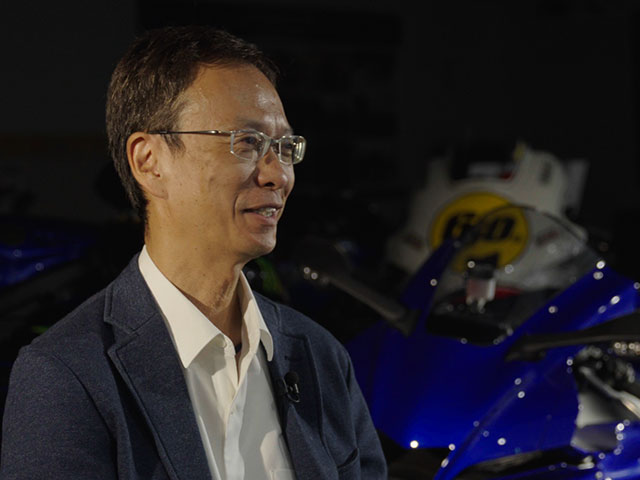
Toyoshi Nishida
YZF-R1 Project Leader/Engineer for Successive Generations
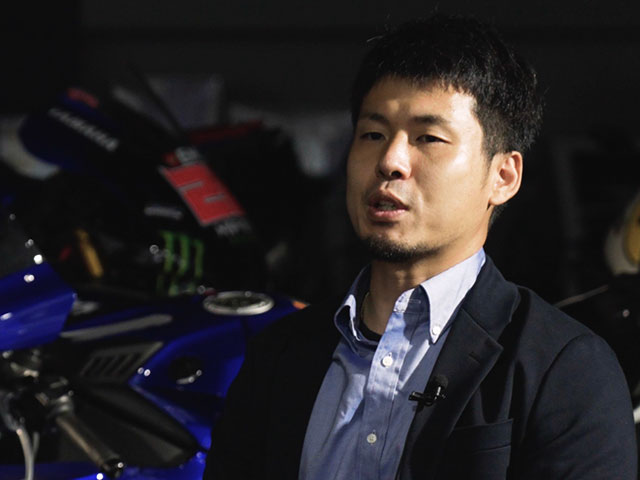
Shigenori Nakahara
YZF-R1 Testing Engineer

Isao Sakata
GK Dynamics Product Designer
Beginnings: R-DNA
From the late-1980s through to the '90s, it was the age of the hefty supersport machine. Mounting powerful 1,000+ cc engines in equally sizable frames and bodywork, manufacturers competed for big-bike presence on the road and the highest top speed. In that sense, these motorcycles and how they were used were closer to today's sport-tourers; ample power and space in the saddle were the main criteria riders looked for. Yamaha's flagship entry in the category was the YZF1000R Thunderace, with the YZF600R Thundercat as its smaller sibling in the lineup.
At the time, a Yamaha development team was working on creating the company's next supersport model. Instead of being bound by past projects or the latest trends, the team sought to rethink and redefine from the ground up what a supersport bike should be. They decided to move away from the trajectory set by the Thunderace and instead build a machine purely emphasizing light weight, slimness, and compactness, as the pursuit of these three elements when building motorcycles had been an unwavering principle at Yamaha Motor since its founding in 1955.
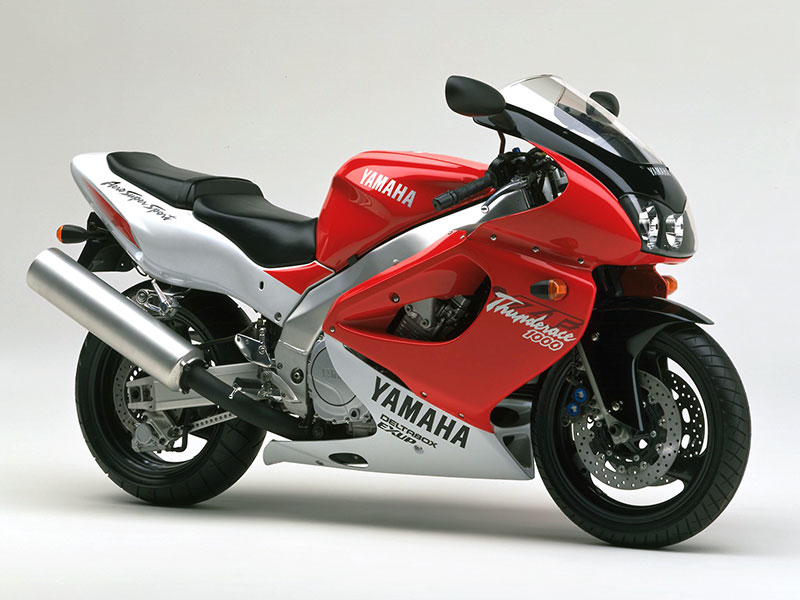
Rewinding the clock a bit further back to 1985, Yamaha set the motorcycling world alight by developing its first 4-stroke supersport machine: the FZ750. The machine's 5-valved DOHC engine with downdraft intake was mounted in the frame with a forward incline toward the front wheel. The aim of this unique arrangement was to enhance the sense of unity between rider and machine, chiefly by lowering the bike's center of gravity while increasing the load on the front tire to generate clearer front-end feel. This idea of designing the engine and chassis as a single integrated component was called “Genesis” and it is a development ideal that remains part of Yamaha today.
The FZ750 was a textbook example of a lightweight, slim, and compact supersport machine and it was highly competitive on the racetrack, taking a fantastic win at the 1986 Daytona 200 just a year after its market debut. The momentum established by the FZ750's success later grew into the racer replica category, ushering in a thrilling period in which full-on racebikes were developed alongside their street-oriented counterparts. In Japan, to compete in the new Superbike class that replaced the Formula TT class, the FZ750 evolved into the FZR750R and then YZF750R. It was from here that 1,000cc supersport bikes branched off to become their own category.

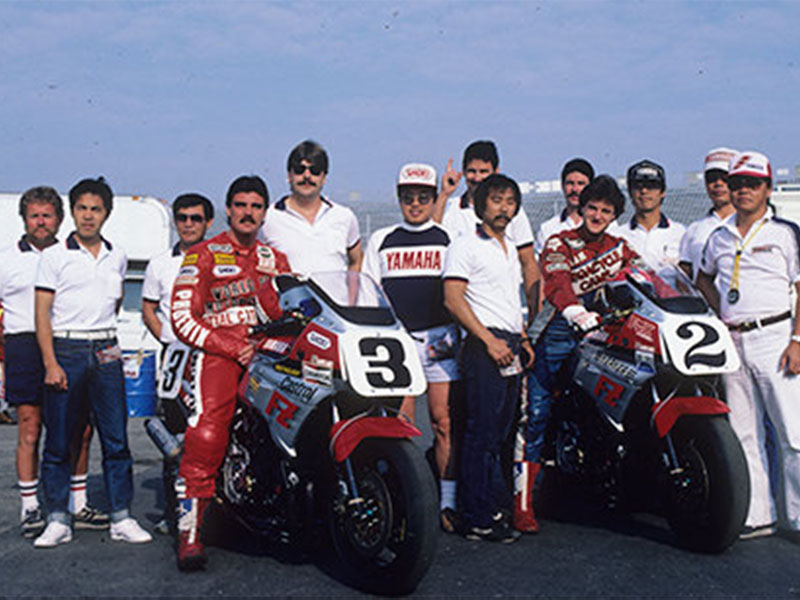
In the mid-1990s, the idea Yamaha had for its next supersport machine was neither a spacious liter-class model nor a racer replica; this bike would be a lightweight, slim, and compact supersport with excellent handling, ridability, and traction. The core concept for this new motorcycle and its envisioned characteristics was “Excitement” and development began with the goal of creating the fastest machine on twisties and secondary roads. The man leading the project had previously developed Yamaha's 2-stroke racebikes as well as the YZF750R racebike, and the technical requirement he focused on was creating a layout with the same engineering freedom afforded by 2-stroke race machines. The 4-stroke engines of the time were longer compared to the naturally compact design of 2-strokes, a disadvantage the team faced in trying to create the ideal chassis performance. This was because 4-stroke engines until then lined up the crankshaft, mainshaft, and driveshaft in a straight line horizontally, inevitably making the engine itself longer. The project leader was insistent that the engine development team come up with an alternative layout, but this presented an enormous challenge as it meant they had to essentially abandon long-established engineering conventions.
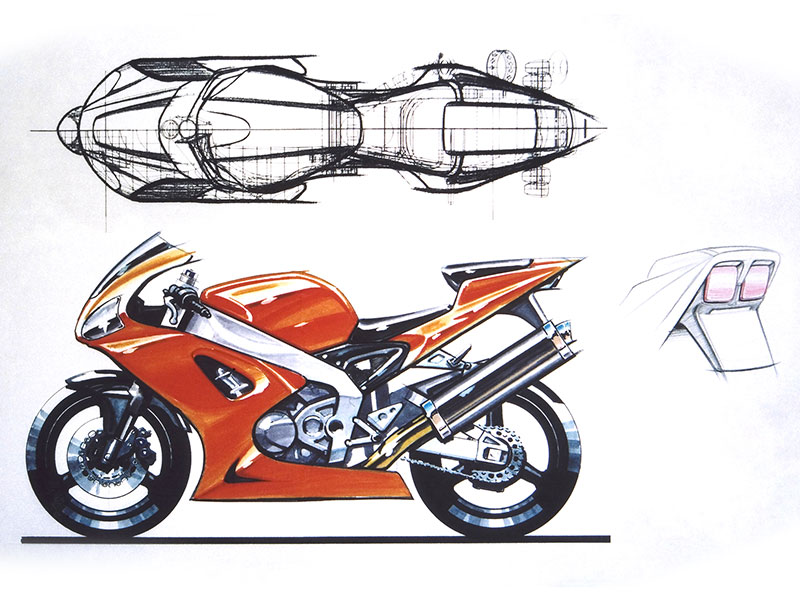
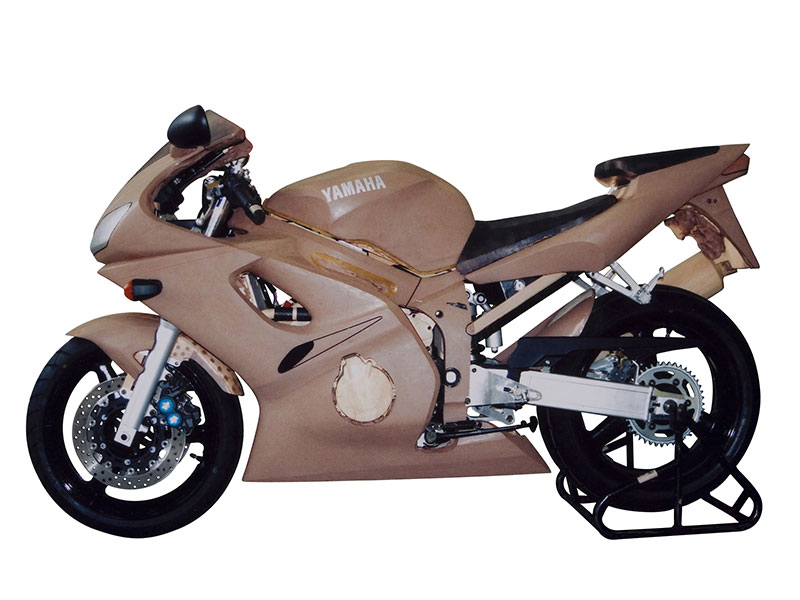
However, the engine development team put their heads together and devised a way to arrange the crankshaft, mainshaft, and driveshaft in a triangular layout to make the unit shorter. The resulting engine turned the design standards of the time for supersport powerplants on their collective heads. The team had found a technical solution to overcome the conflicts presented by having a short wheelbase and a long swingarm. This delivered not only agile handling but also marked improvements to chassis stability when accelerating, braking, or cornering.

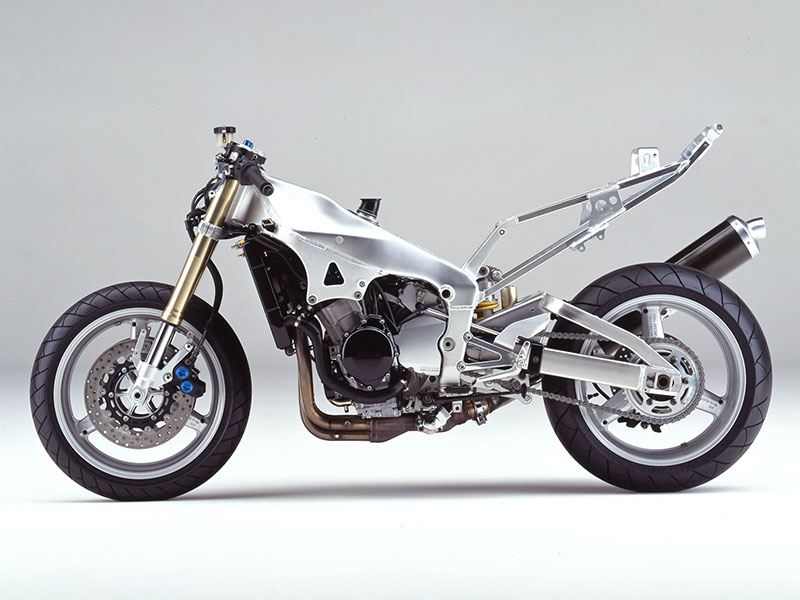
The exterior form of the bike also broke away from the “long and large” style and racer replica looks of the time. The machine's performance and functions were reflected throughout the bodywork, from the front end to the taillight, taking on the persona of a toned, well-trained athlete instead of a muscular bodybuilder. Furthermore, it departed from racer replicas that put functionality above all else and cast aside anything playful or decorative, instead opting for a sleek, high-quality look that encouraged affinity and fondness from riders. Part of this change were the prominent, glaring twin-eye headlights, which would go on to become a quintessential part of R-Series design language.
While employing technologies from racing, the new machine was not actually intended for racetracks; it was a supersport bike meant to be the fastest ride on twisty and secondary roads. Then at the 1997 Tokyo Motor Show, the machine was finally unveiled to the public as the all-new YZF-R1.
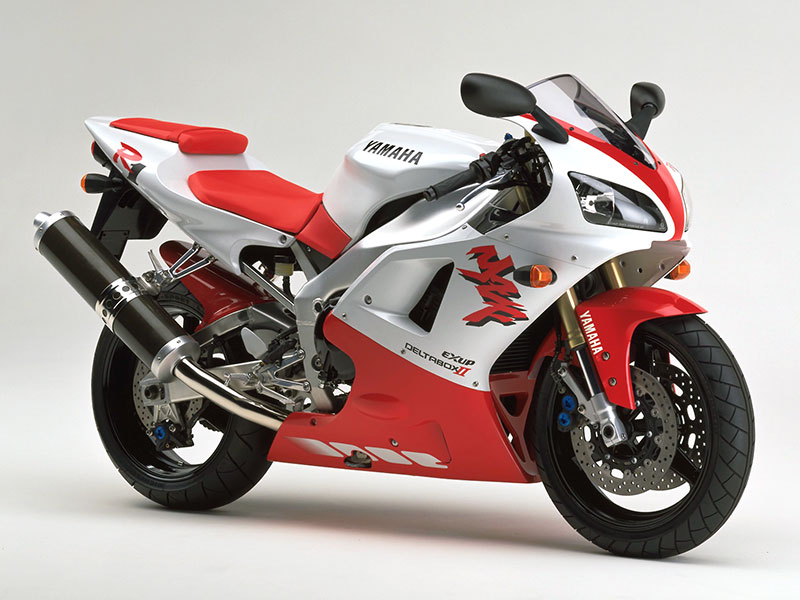
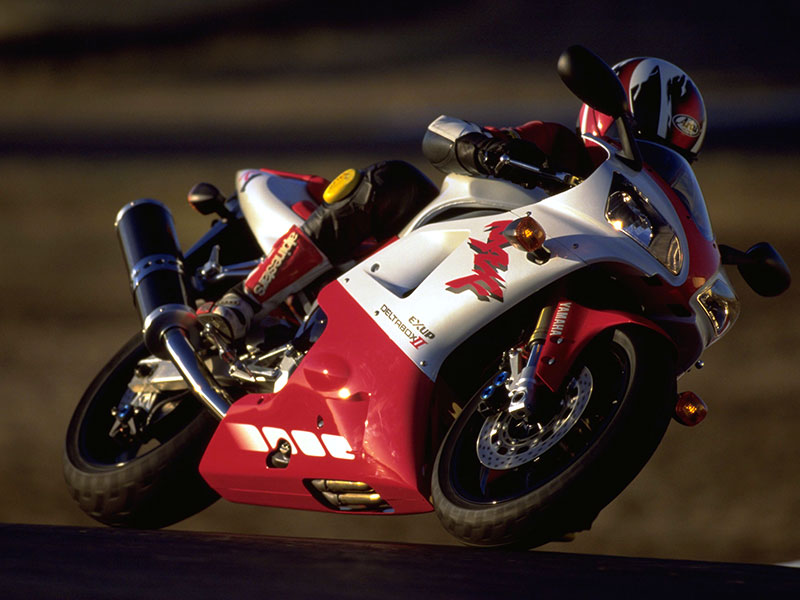
The R1's Forward Charge
As soon as the first-generation YZF-R1 was released, it became such a hot topic in the industry that Japanese journalists dubbed the impact it left the “R1 Shock” because it changed the entire supersport category overnight. The stability and traction characteristics provided by the bike's lightweight, compact chassis and long swingarm; ridability for predictable responses to the rider's wishes; an effective front and rear suspension combination; and much more delivered sportbike handling the likes of which no street rider had ever experienced.
After several minor updates, the R1's first full redesign came in 2004, six years after its introduction. This all-new fourth-generation model boasted a whopping 20 more horsepower, upping the number from an already-potent 152 to 172. But Yamaha has never been one to aimlessly push for more power; one reason for the increase came from the development team's visit to the Isle of Man TT as part of a market research trip to Europe. The TT's Mountain Course is famous for its tricky corners and unpredictable road surface, but what the team learned was that TT racers were actually spending a good deal of time at full throttle on the straights. So they concluded that the bike would need more power to give racers an easier time when riding flat out, which led to setting 20 more horsepower as a development goal. To make it happen, the engineers set out to build a high-compression engine, but there simply were no production engines putting out the amount of power they were looking for to refer to. So they went to the drawing board to design a completely new engine for the task, prioritizing reliable high performance, lasting durability, and more. The new unit adopted a closed deck cylinder design and fracture-split connecting rods for the first time.
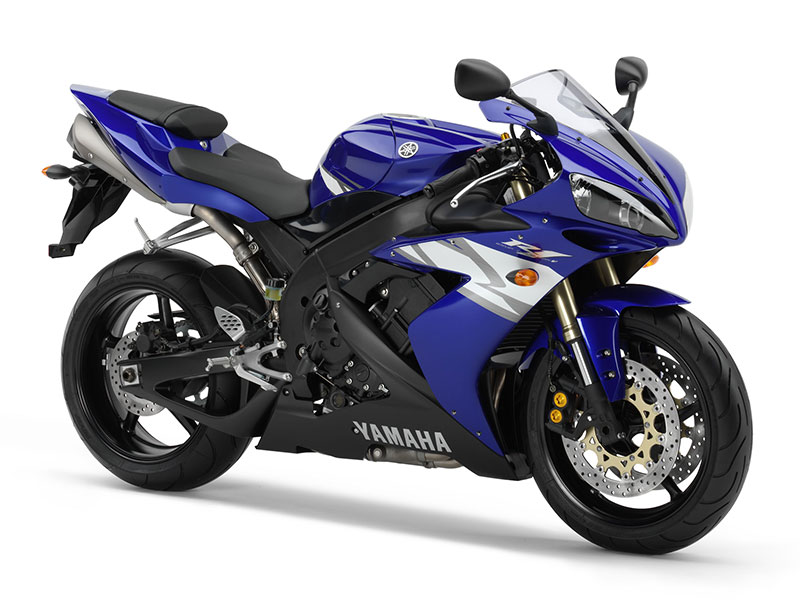
However, the chassis first needed enough rigidity to handle the full 172 horses of the new powerplant while retaining the YZF-R1's signature light handling character. To that end, a new aluminum Deltabox frame was engineered, striking a careful balance between greater longitudinal rigidity and less lateral rigidity for a stiff but still flexible construction. This is likened to the stiff joints and flexible tubes of bamboo stalks, and this analogy is still often used by engineers when describing the rigidity characteristics of motorcycles today.

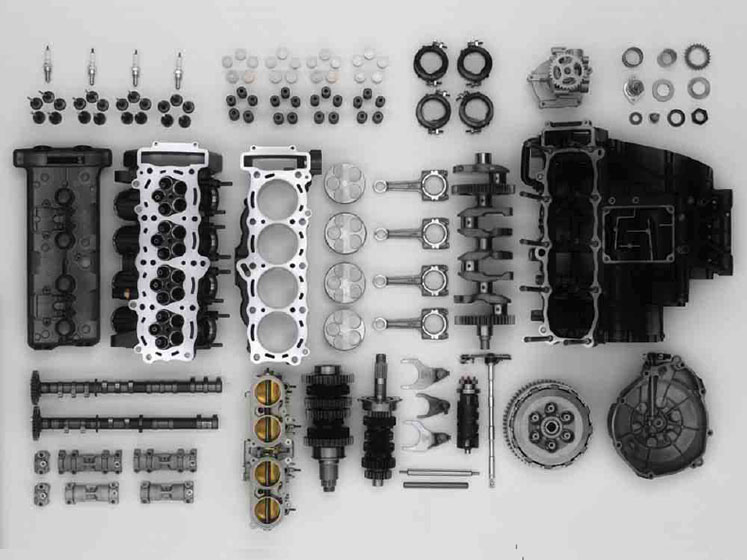

The fourth-generation YZF-R1 also had a completely different exterior. Though it carried on traits from the first R1, it took on a new form designed to visually express its performance improvements. One defining feature was its underseat mufflers; it was the first time for a Yamaha model to use them since the ones that produced the Kodo (“Soul Beat”) for the MT-01. There were performance aspects to the decision such as mass centralization and securing a deeper maximum lean angle, but the development and design teams' motivations were a bit more straightforward—they looked cool! The bike also offered another opportunity: a blank canvas to work in touches that would inspire pride of ownership and create a quality look and feel, something done with each minor update the first-generation R1 saw. This fourth-generation bike was the ultimate aesthetic expression of function and performance, and it still has many fans today.
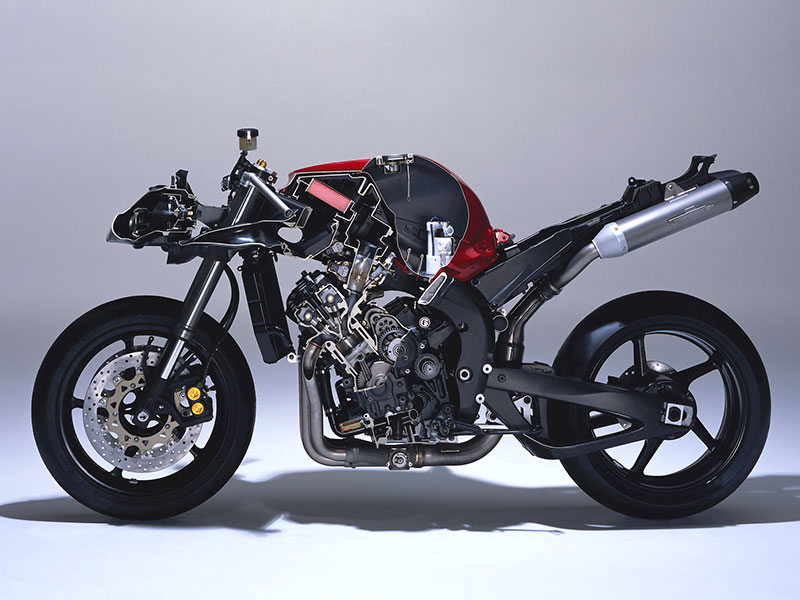
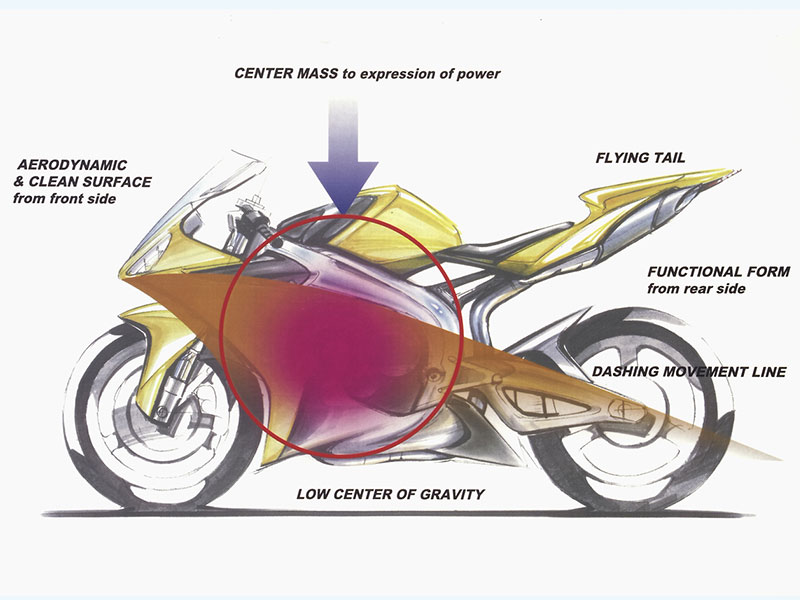
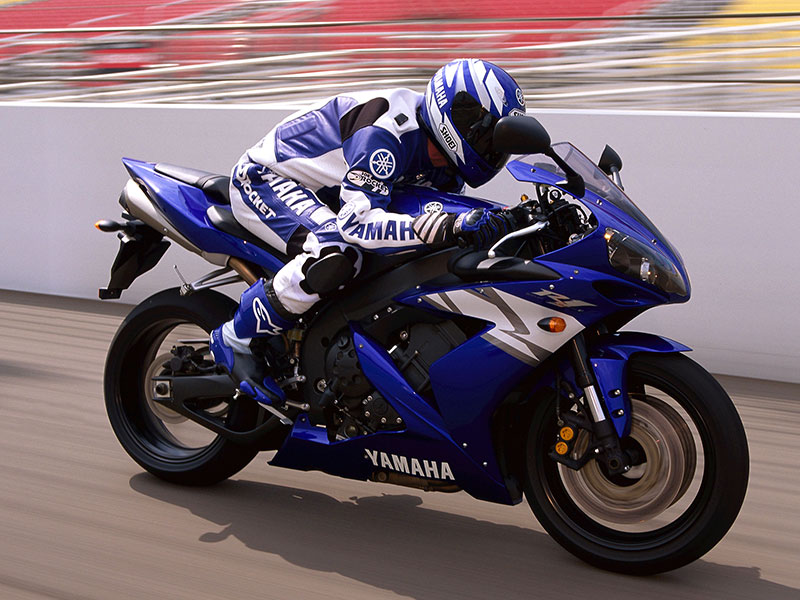
In 2007, the fifth-generation YZF-R1 was released with a four-valved engine instead of the five-valve format that had become a Yamaha tradition by that point. Advancements in materials had made it possible to introduce lightweight titanium valves to production models, thereby reducing the weight of the entire valvetrain. And in 2009, the sixth-generation R1 was released with an all-new engine featuring a crossplane crankshaft.
The development concept was to “Turn a new page” in supersports history. At the time, Yamaha's several seasons of success in MotoGP were spearheaded by the YZR-M1 and its crossplane crankshaft. The crossplane engine's characteristics eliminated the “noise” caused by inertial torque, giving the rider a more direct feel of the traction and drive at the rear wheel, resulting in exceptional ridability. The team creating the sixth-generation R1 worked closely with the MotoGP development team, which imparted many technologies from the racetrack in order to develop the first crossplane engine for a production bike. The roar of the crossplane engine, which until then could only be heard on a MotoGP grid, was now finally available to the average motorcyclist.
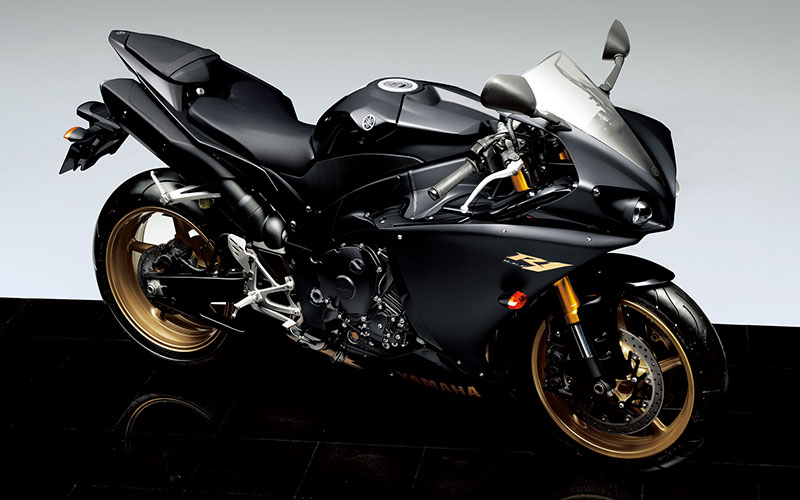
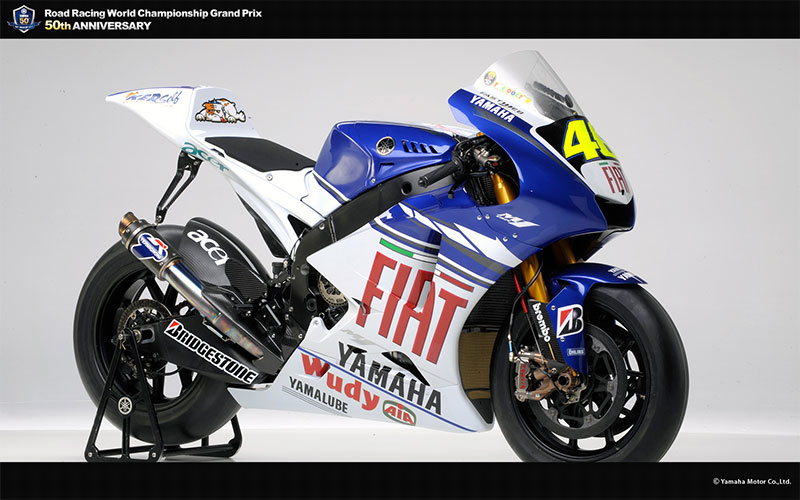
It is not an exaggeration to state that this crossplane crankshaft developed for a four-cylinder engine was revolutionary. Flatplane engines have inherent advantages that make them still the mainstream, but Yamaha's focus with the crossplane four was on giving the rider greater control. So a concept that was proven in the racing world was relayed back into the production model, and the excellent ridability demonstrated by the sixth-generation R1 served as the basis for the “Crossplane Concept,” a benchmark for the character of Yamaha's later twin and triple crossplane engines.
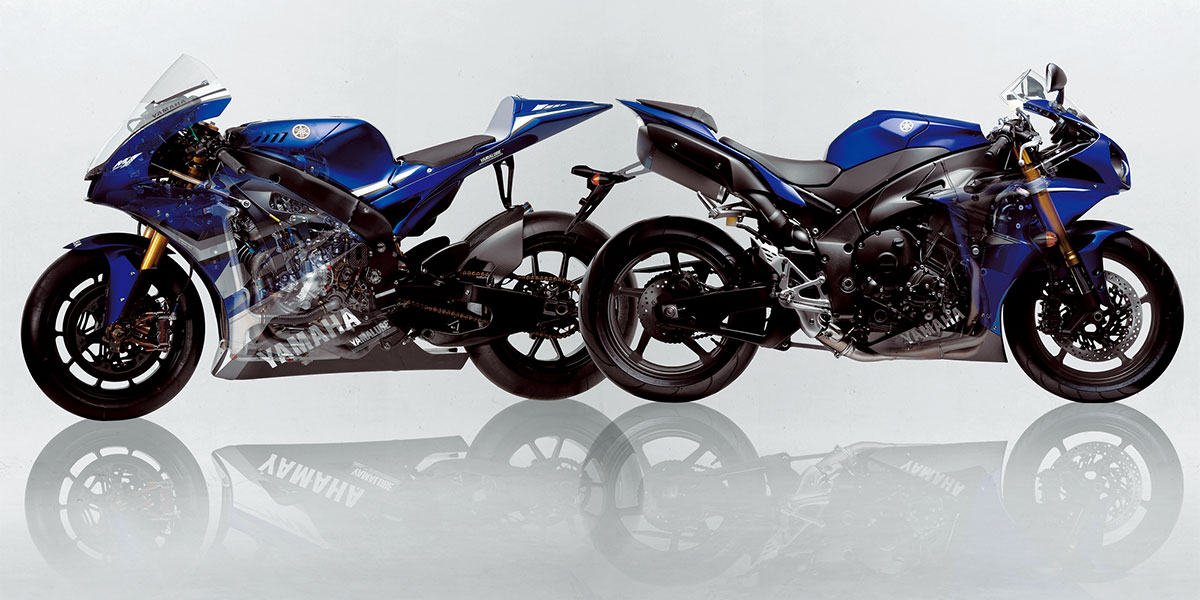
The sixth-generation model was also given an all-new exterior design to match its revolutionary engine. A wholly different approach was taken, summed up simply as “mysterious.” For the average rider, a crossplane engine, its internals, and its characteristics were all unknowns and thus full of mystery. So rather than trying to describe everything in a way most would understand, the designers elected to not explain anything at all. To that effect, the engine itself was purposefully hidden as much as possible to keep the performance housed within mysterious.
Similarly, the pointed glare of the iconic twin-eye headlights was also reinterpreted, with dual projector headlights positioned near the center of the front air intake. The concept behind the design was to emulate the eyes of a reptile in which it isn't clear which way they are looking. Furthermore, to instill a strong sense of pride in owning a flagship supersport bike, a new color scheme was offered that had been unthinkable until that point. One of the color options in the lineup featured white bodywork with a wine-red frame and swingarm for a chic look.
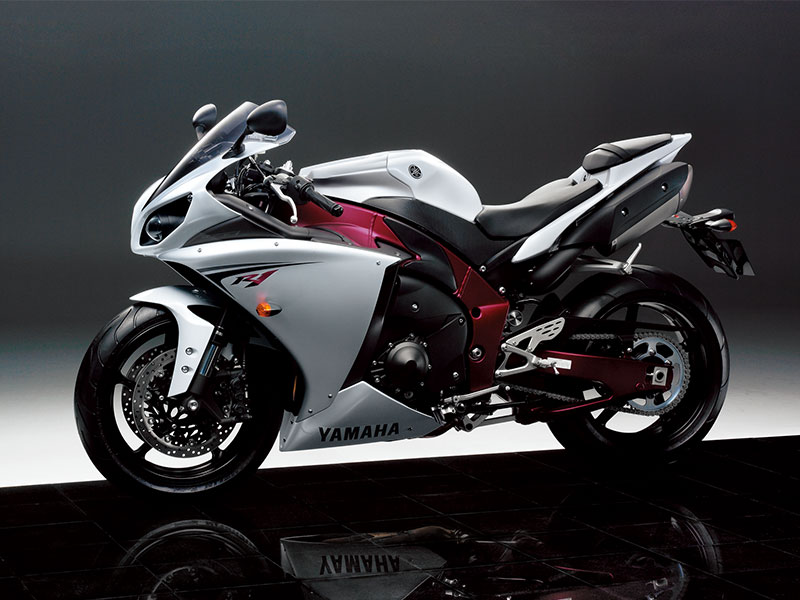
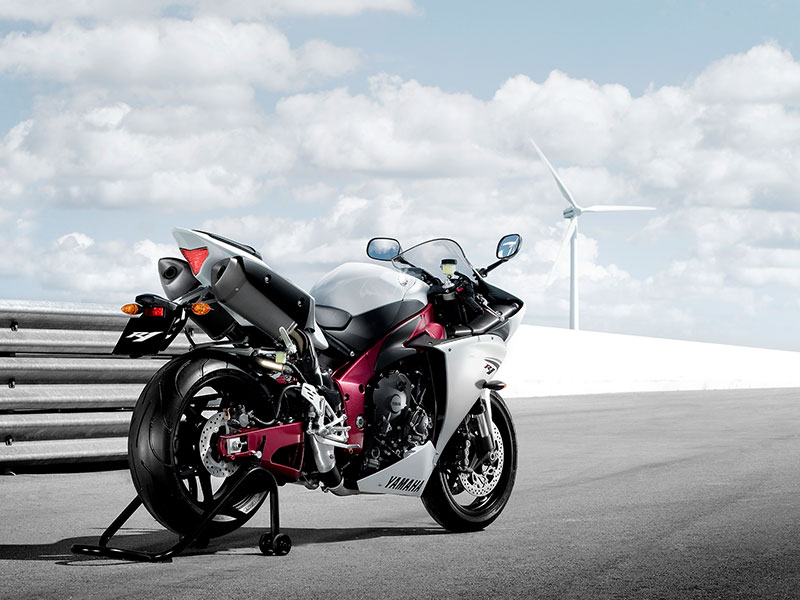
After the updated seventh-generation R1 landed in 2012, the all-new eighth-generation model followed in 2015. This model staged a major shift in the development direction that had been in place since the original 1998 R1: the goal of being the fastest on twisty and secondary roads changed to being the fastest on the racetrack. Behind this decision was the prediction that with ever-increasing gains in performance, the day will come when riders will simply no longer be able to enjoy supersport motorcycles to the fullest on public roads, and the number of riders taking their machines to circuits for weekend trackdays was also on the rise.
The design concept for this all-new R1 was “The Speed Racer” and development focused solely on performance for the racetrack, with the YZR-M1 MotoGP machine heavily influential in terms of both performance and exterior design. The engineers on the team were actually allowed to test-ride the M1 and applied what they felt and experienced toward designing the engine and frame—the M1 was not only incredibly fast but also surprisingly confidence-inspiring and easy to ride. To incorporate that into the new R1, the engine, chassis, brakes, and electronics were all completely redesigned. By reducing horsepower loss and meticulously cutting down the weight of individual parts and components, maximum engine output jumped to 200 horsepower. But in addition, the crank mass was lightened and other extensive steps taken to make the bike easy to ride and thereby give the user the ridability needed to attack each part of the track with confidence.
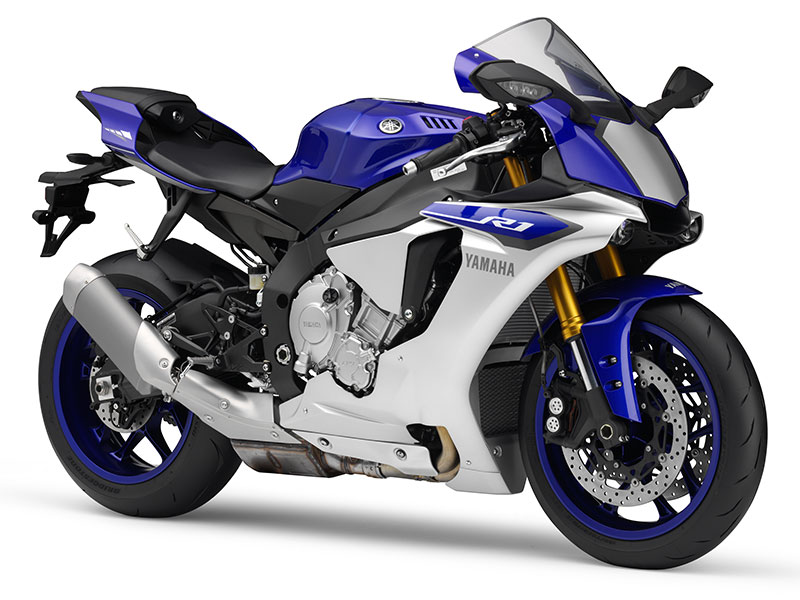
What facilitates that in modern motorcycling is the advent of electronic riding aids. However, Yamaha does not believe that anything and everything should be left to a motorcycle's electronics—they should be like a stagehand supporting the rider from behind the curtain. The eighth-generation YZF-R1 was the first Yamaha to adopt a six-axis Inertial Measurement Unit (IMU). By monitoring the bike's pitch, yaw, and roll as well as its acceleration along the XYZ coordinate axes in real time, it can optimize the operation of onboard systems for traction control, slide control, front-wheel lift control, brake control, and the quickshifter. What is key is setting the threshold values for when the electronics intervene, and Yamaha test riders spent countless hours and kilometers working to fine-tune the systems and set values delivering optimum feel and performance.
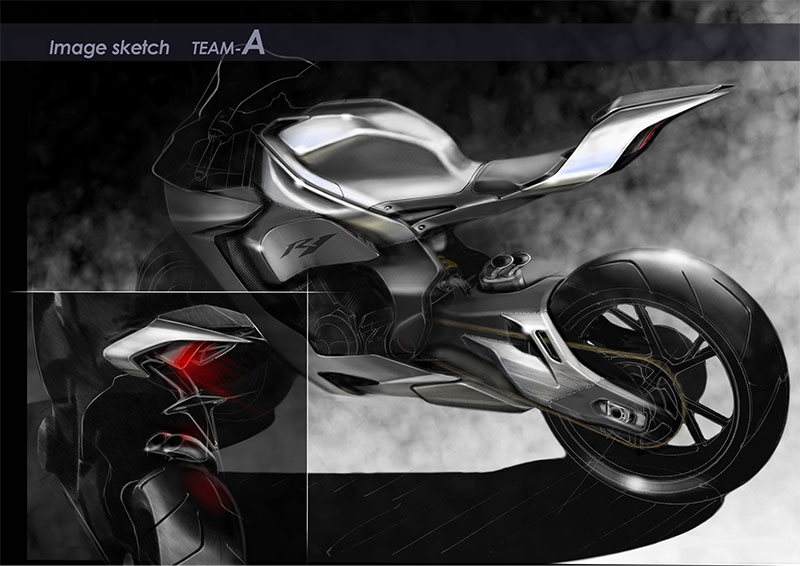
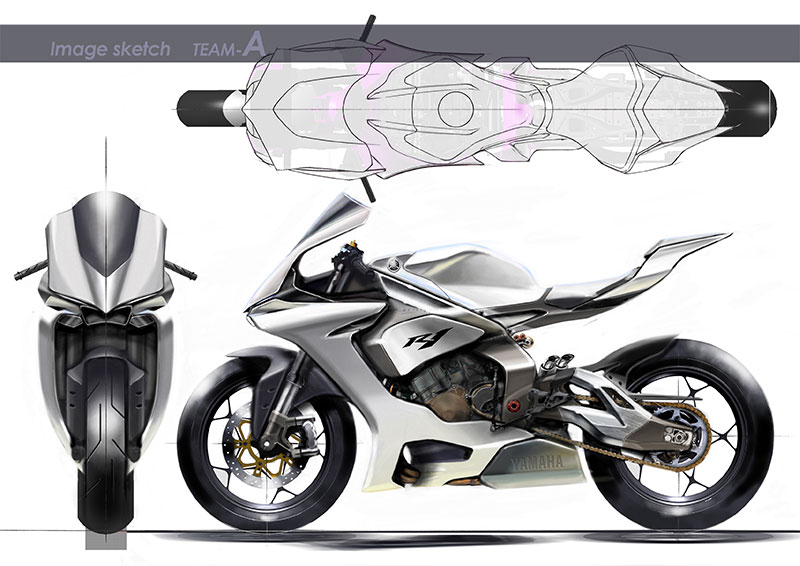
The 2015 YZF-R1 proclaimed itself to be the “Fastest on the Racetrack” upon its debut and proved it at one of motorcycle racing's most prestigious events. At the 2015 Suzuka 8 Hours, the new machine rode to wins in both the EWC and SST classes for the first time in Yamaha history. It was reminiscent of when the FZ750, which was also developed with racing in mind, accomplished a similar feat by winning the 1986 Daytona 200 not long after it debuted.
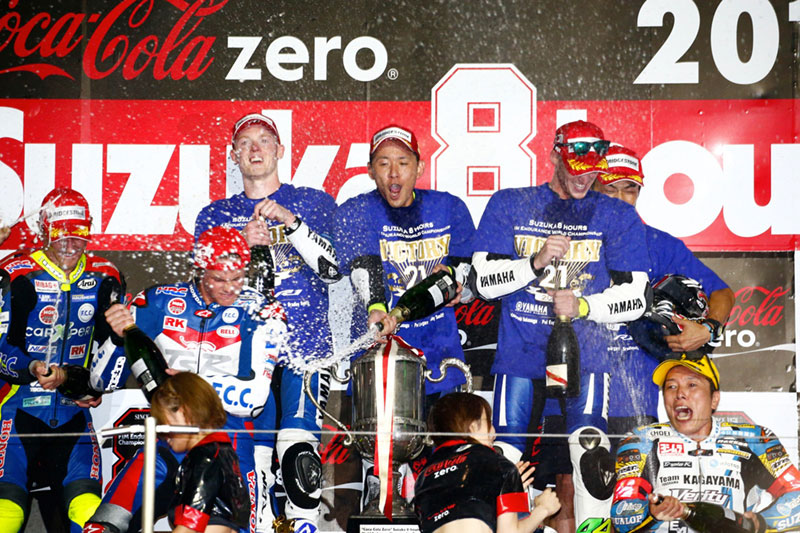
The exterior design was also a significant departure from previous R1s, an understandable development with the change to the aim of the bike itself. The design made the new R1's “Speed Racer” character and orientation apparent at a glance, with the form and bodywork drawing heavily from the YZR-M1. The links are particularly noticeable at the front. The front face's aerodynamic form and central air intake were the same as the M1's, and to improve aerodynamic efficiency and reduce the load placed on the front fairing, the R1's projector headlights were relocated below and on either side of the air intake. Doing this makes it harder to discern where the headlights are at first sight and grants the R1 a look more suggestive of a purebred racebike. Also, the design broke away from the typical sportbike side profile where body lines angle downward toward the front wheel as if slicing through the wind. Instead, the 2015 R1 adopted predominantly horizontal lines to project the image of correcting airflow, lending stability to the design and conveying a sense of calm amidst the machine's dynamic outline.
Accompanying the eighth-generation R1 was the series-topping YZF-R1M that came equipped with an Öhlins Electronic Racing Suspension and carbon fiber bodywork.
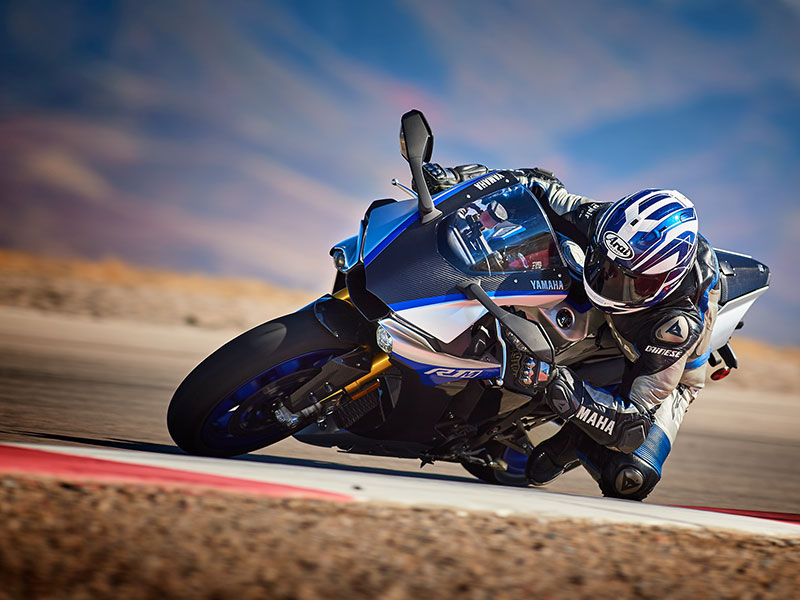
Passing Down R-DNA
Not long after the debut of the original YZF-R1, the YZF-R6 broke cover in 1999. It was not intended as a replacement for the YZF600R Thundercat, but instead developed to be a rival to the R1. The prevailing concept remained “Excitement,” but it was of a different nature. The ride the development team sought with the lighter, more compact chassis and peaky 600cc engine was one that made the bike capable of passing even the R1 up the inside and out of corners. What sparked the machine's development was the popularity of the leading 600cc motorcycle racing series in Europe, which won it a promotion to world championship status in 1999 as the Supersport World Championship. The R6's engine made a class-leading 120 horsepower at 13,000 rpm, featured a Deltabox aluminum frame, and weighed only 169 kg. Such top-shelf specs could easily be mistaken for those of a purebred race machine.
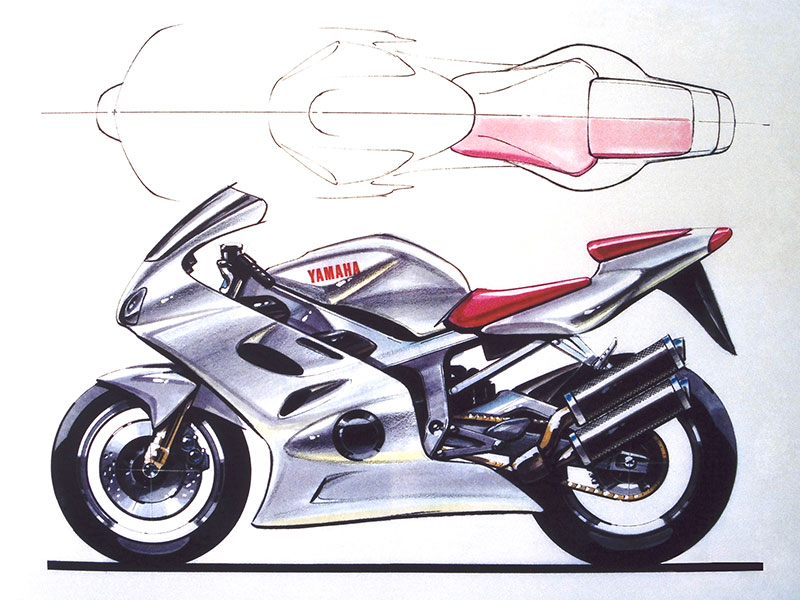
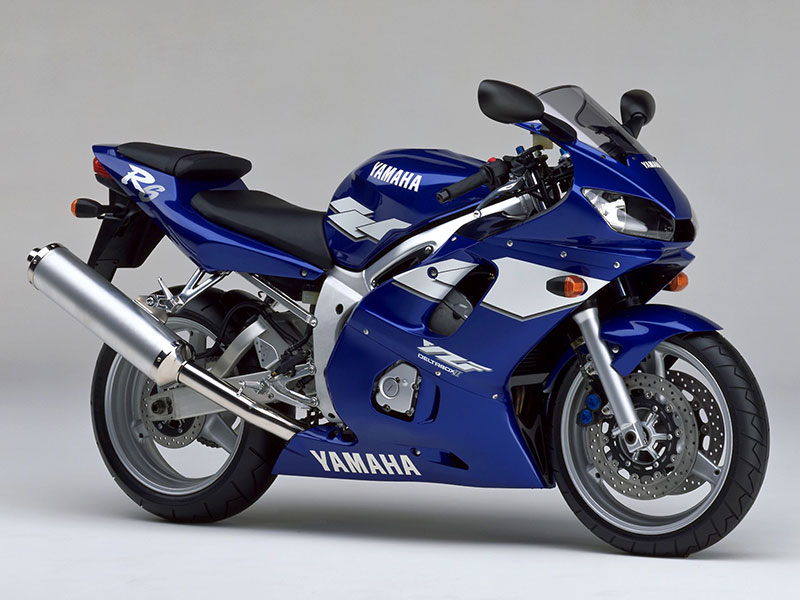
In 2003, the R6 received an all-new engine design as well as a new aluminum frame and swingarm employing Yamaha's controlled filling (CF) die-casting process. This proprietary casting technology enabled the creation of aluminum pieces with not only sufficient strength but also levels of thinness and complexity previously thought impossible. The resulting lightweight frame had ideal rigidity characteristics that greatly enhanced the R6's competitiveness.
Then in 2006, the third-generation R6 arrived, boasting even higher engine performance. The new powerplant featured a big bore, short stroke design; a higher compression ratio; lighter crank mass; and various other improvements that raised horsepower to 127. To illustrate the new model's incredible performance further, it was given a completely new design with more radical styling that clearly differentiated it from the R1.
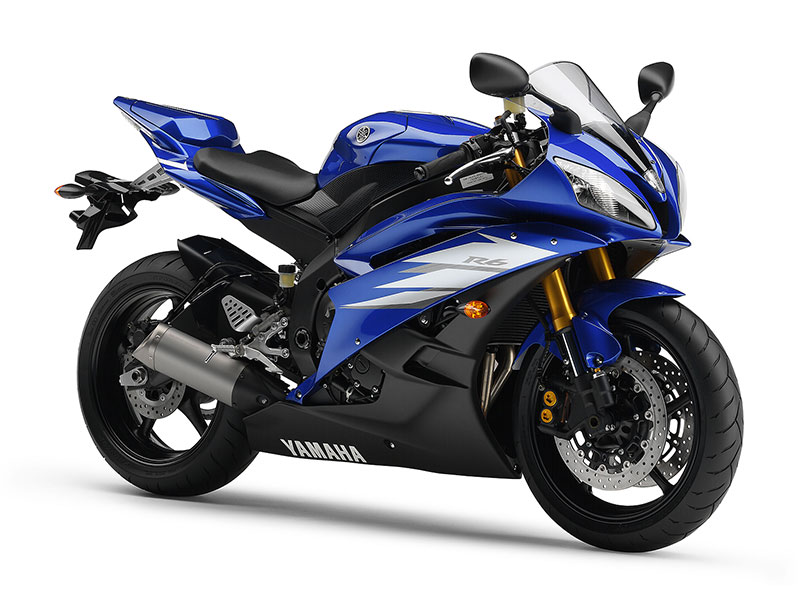
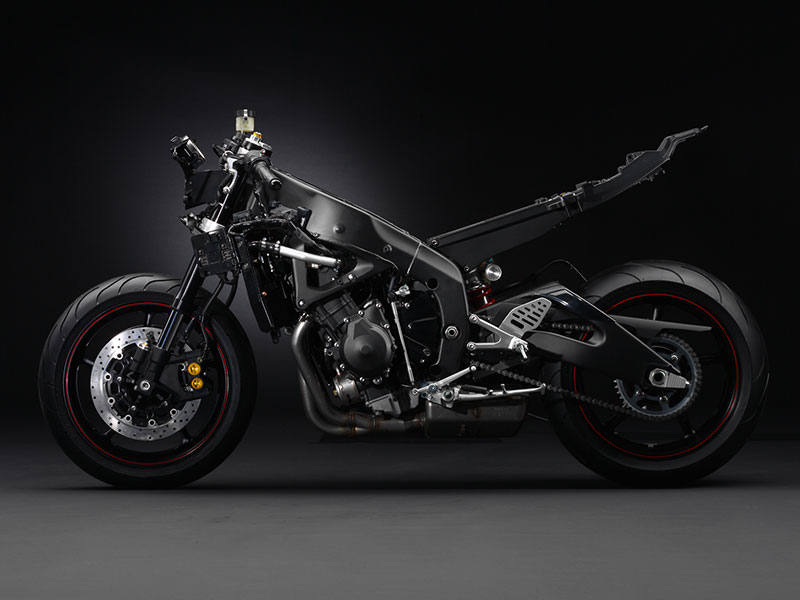
In 2017, the fourth generation of the 600cc supersport was unveiled and it was made to instead heavily resemble the 2015 R1. Until that point, the R6's exterior design had sought to draw a line between it and the R1, but the new model's fairing was similar in shape and form with its bigger sibling, and had the same combination of twin slit-like position lights and standalone underslung headlights.
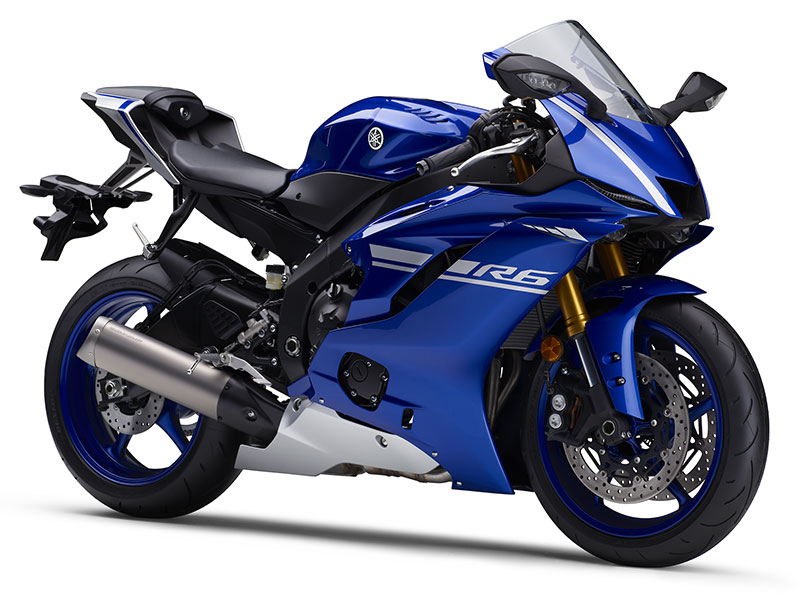
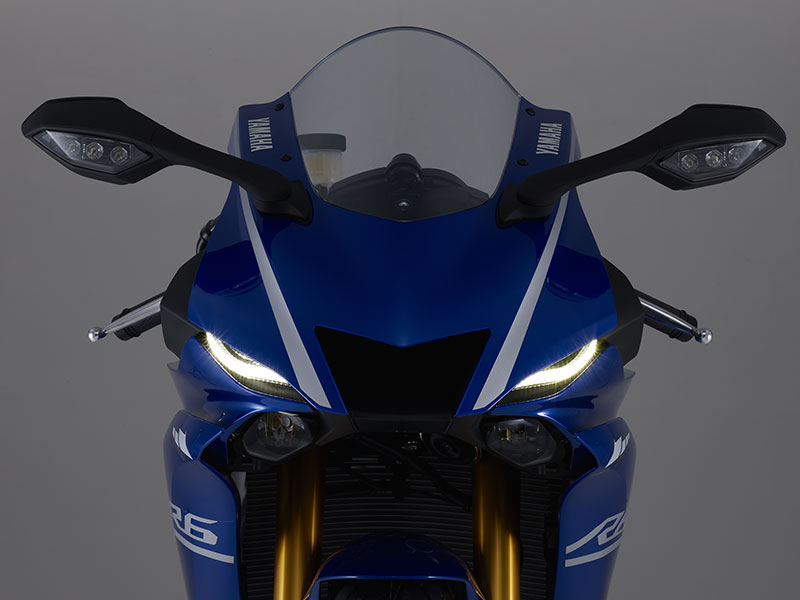
The next step in passing down the R-Series' DNA was to bring the same formula to the smaller displacement classes. The YZF-R15 debuted in 2008, the R125 in 2009, and the YZF-R25 and R3 in 2015. As with all models in the lineup, Excitement remained the aim behind these as well. Though each of these models are ridden in different markets and environments for various uses, they have all been created to offer motorcyclists the joy of riding a sportbike, and the exterior design of each thoroughly reflects their position as part of the R-Series family.
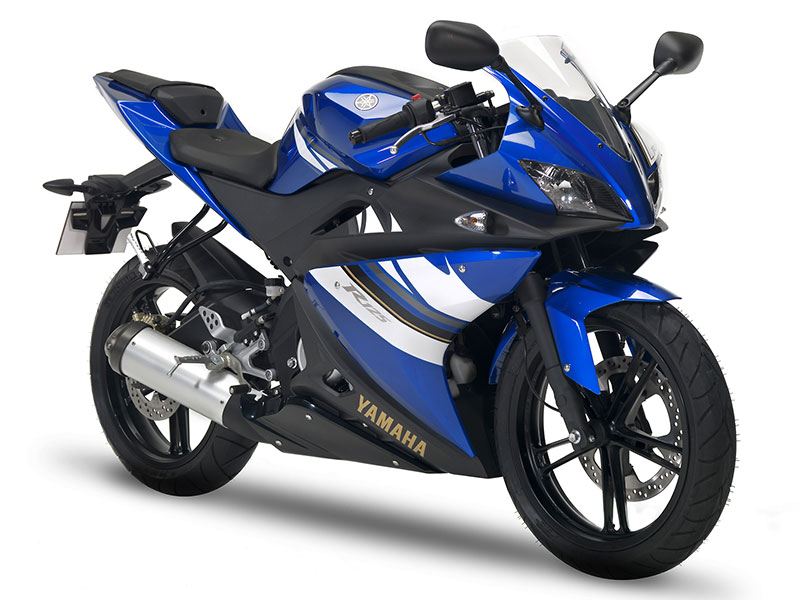
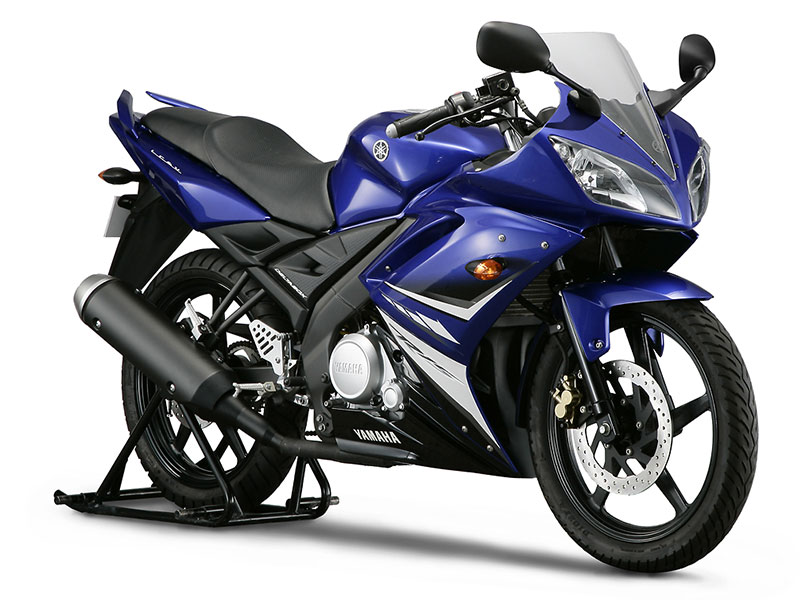

The R-Series Family
The 2015 R1 was used as the base for an updated ninth-generation model in 2020. Improving ridability was a development goal and numerous changes were made to refine the bike, such as a new cylinder head to further raise intake efficiency and optimizing the rocker arm design and cam lobe profiles. These updates were aimed at polishing the machine's performance to reflect the YZR-M1's character with greater clarity, i.e., incredibly fast but also confidence-inspiring and easy to ride. At the same time, the bike's exterior evolved, inheriting the ideas of its predecessor but bringing the level of aerodynamics and functional beauty up a notch. For example, the 2015 model pursued a racing-inspired aura and used a smooth upper-middle fairing, but the 2020 model did the opposite by adding indents and curvatures to the surface to improve aerodynamic performance as well as to give the R1 a more sculpted feel.
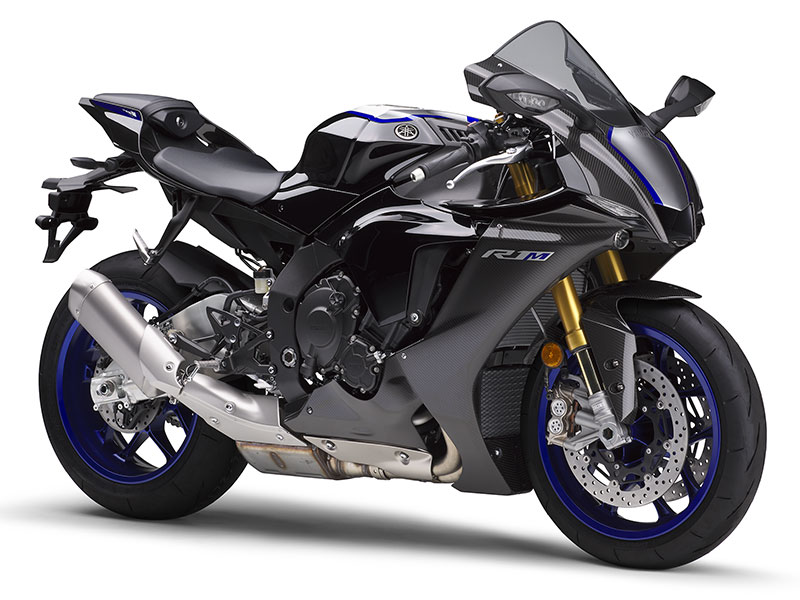
The smaller displacement machines in the R-Series today are the YZF-R125, R15, R25, and the R3, and these too offer that Yamaha riding excitement to enthusiasts around the world. The R25 and R3 were launched for global markets as “superbikes you can ride every day” and live up to that concept with performance worthy of a supersport model. To ensure they always kept in mind that they were R-Series models, the project team kept an R1 within view during development. R-DNA does not impose any clear-cut rules to follow, but if a model is to have an “R” in the name, Yamaha engineers intuitively know the standards expected for performance, cornering, and braking lie in the supersport realm. However, for these models, the team also had to consider the day-to-day usability expected in the 250cc/300cc class on top of these standards. Though they may look like unforgiving supersport machines, they are actually well suited to daily use, such as the clip-ons being mounted on top of the front fork and the seat and footpeg positions set to produce a rider triangle for a comfortable upright position. Yamaha wanted riders to be able to enjoy the excitement of a supersport even on a simple commute to or from work or school.
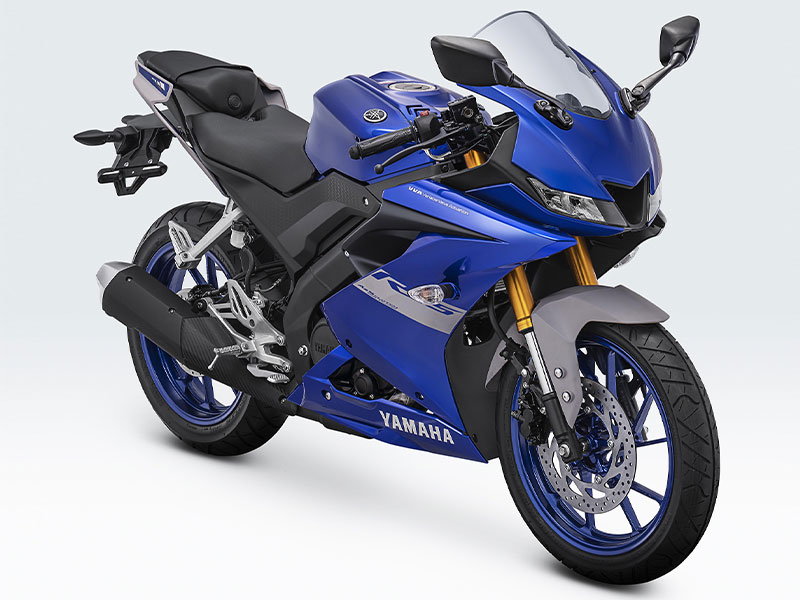
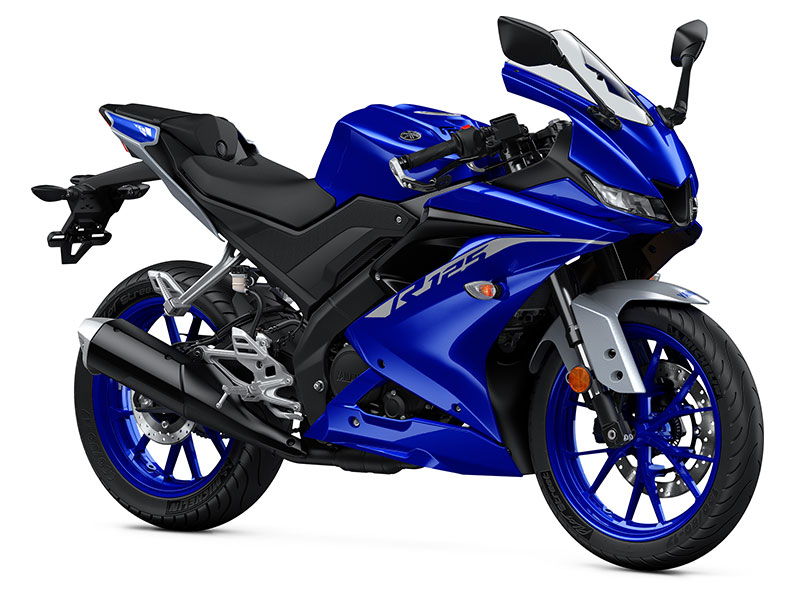
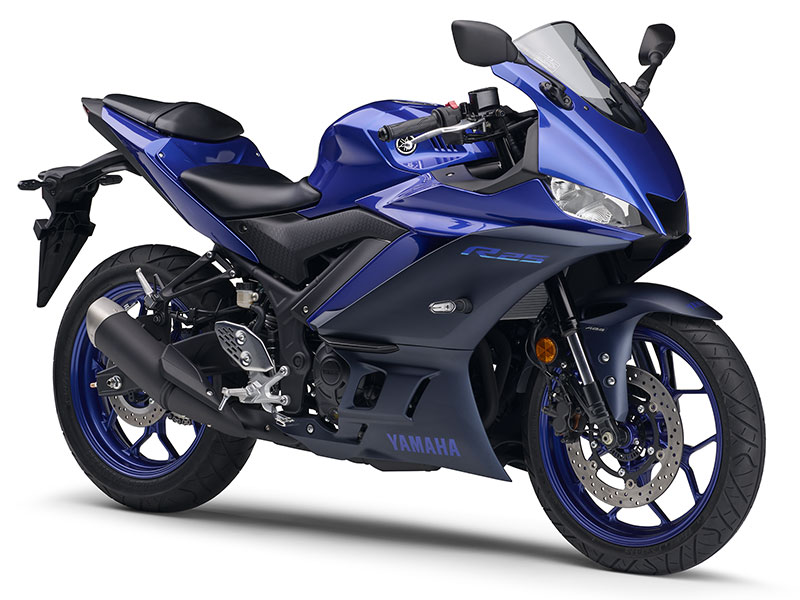
In 2021, the fourth generation of the YZF-R15—dubbed Version 4.0—hit the streets and its styling was also reminiscent of the R1, with further design details reinforcing its R-Series family links. The use of a liquid-cooled single with Variable Valve Actuation (VVA) for the powerplant continued. VVA delivers excellent torque at low to mid-rpm but also ample power and pull at high rpm, giving the bike an emotion-charged ride across the entire rev range as opposed to the flat torque curve often seen with small-displacement models. It also gained genuine supersport features with a new inverted front fork, traction control system, and quickshifter.
The YZF-R15 Version 4.0's distinctive front end stands out with its M1-inspired M-shaped air intake that houses a single LED headlight. The left and right LED position lights also flow outward from the middle in a layout that makes the motorcycle appear larger while the actual projected frontal area remains small.
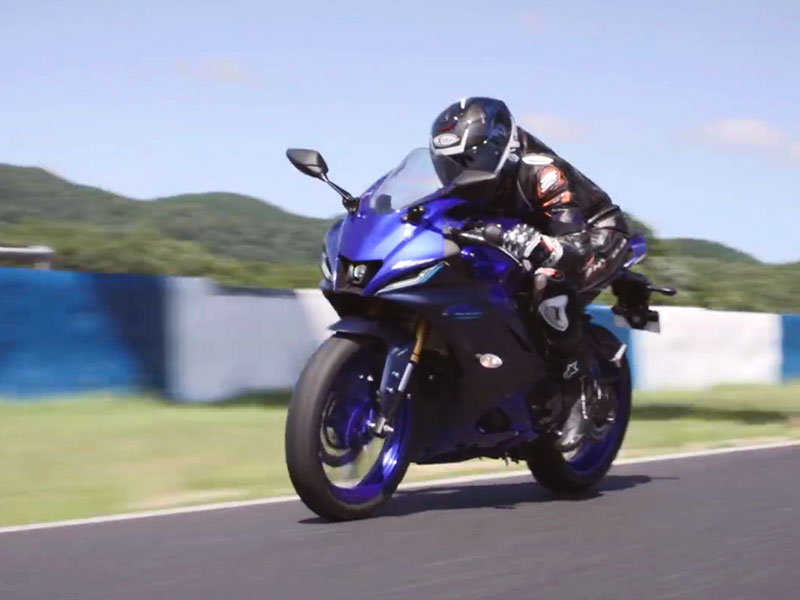
The same year the fourth-generation R15 was released, the YZF-R7 was also revealed and it signaled a new direction for the R-Series. While it shares the product name of the legendary 1999 YZF-R7 (OW02) superbike homologation model, the new R7's character and positioning are entirely different and one good look at it gives a clear idea of its intended purpose. It is a middleweight supersport unlike the surgical race-oriented YZF-R6; the goal was to make it a supersport allowing riders of various skill levels and experience to extract the entirety of its performance potential. The project team wanted more and more motorcyclists to be able to experience what lies at the heart of riding a supersport—chiefly, Excitement—without having to be in the saddle of an all-out and uncompromising R6 or R1. Based on the MT-07 platform, the R7 uses the same uneven-firing CP2 parallel twin with 270° crank and lightweight, high-rigidity tubular steel backbone frame, and it was meticulously developed to be a light, slim, and compact supersport machine.
The ride and direct feeling of traction provided by the CP2 engine's torquey, pulse-filled character and the frame rigidity characteristics tuned specifically for the R7 make it a machine that can be enjoyed to the fullest just about everywhere—from twisty roads to trackdays—by allowing riders to extract the entirety of its performance. It is recommended as the next step to take for riders on a YZF-R25 or R3 who want to experience the next level of riding excitement offered by the R-Series.
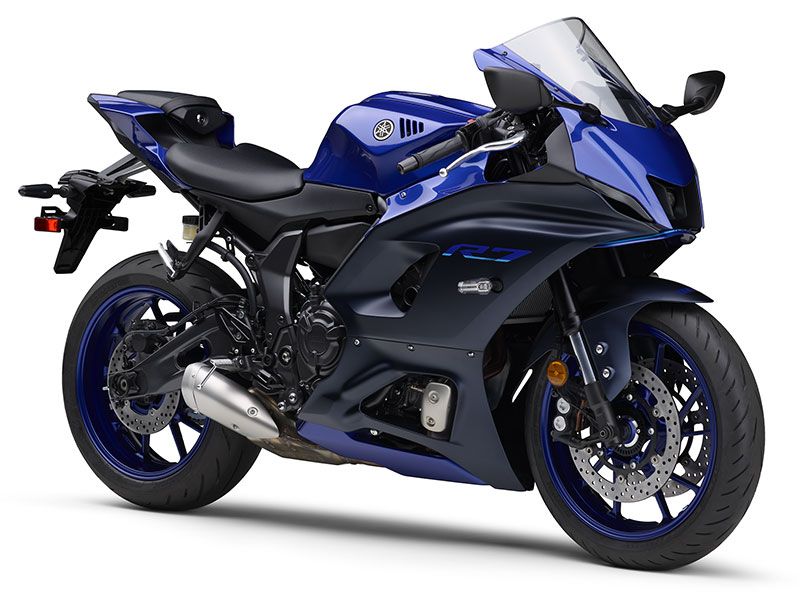
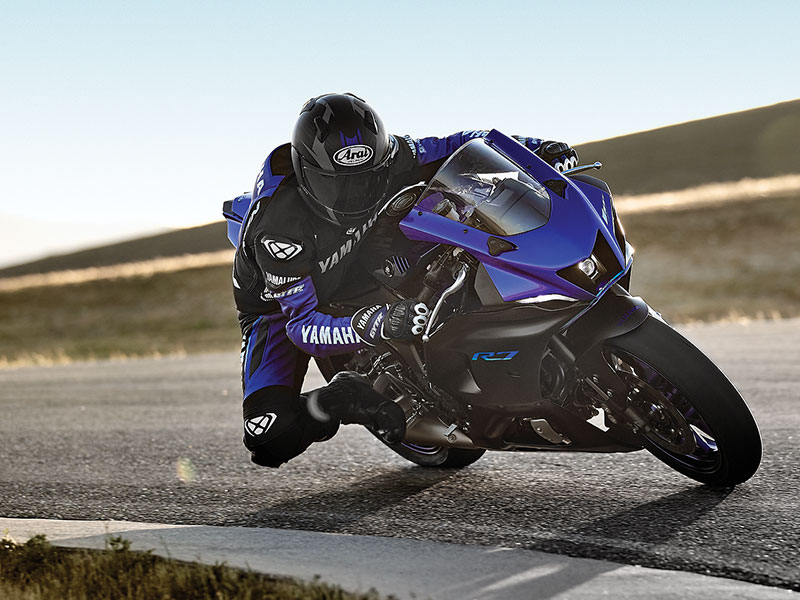
Designing the R7's exterior was an exercise in seeing how tightly packed the machine could be made. Taking full advantage of the slim physical dimensions of the parallel twin and the frame, the concept for the R7's bodywork was “Skinny Proportions for Perfect Control.” With supersport performance, machine agility is often a by-product of slimness in particular, which is why the middle fairing was purposefully not given any curvature to produce a sleeker form. Further, to give the machine a tighter impression when viewed from the front, the LED headlight is embedded in the air duct with the position lights on either side. This placement of the headlight inside the air duct is an R-Series trait also seen on the latest R15.
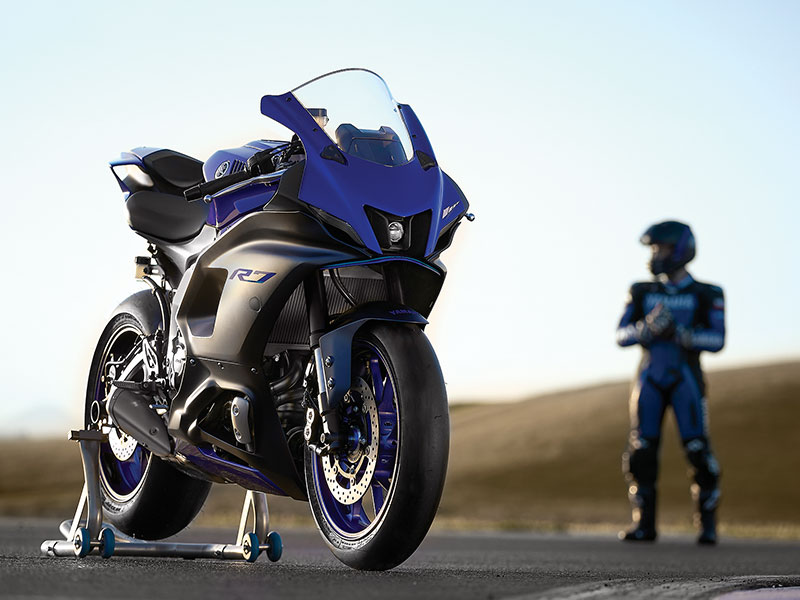

From the YZF-R1, R6, and R7 to the R3, R25, R15, and R125, the improvements made as well as the intervals between updates for each one differ, but the newly developed technologies and design ideas of the time are not mutually exclusive, with each model in the series influencing another's evolution, regardless of displacement class. This is how the heart of the R-Series beats today.
Commitment: Toward the Future
“Even if it flies in the air, I'd call it an R1 if it provides the same Excitement,” said one engineer on the team that developed the fourth-generation R1 in 2004. These words make it clear that the fundamental mission behind the R1—and the R-Series as a whole—is to provide motorcyclists with real riding excitement. If including the time it took to develop the original R1, the R-Series has been growing and evolving for over 25 years. Through those decades of development, the Monozukuri based on Yamaha's Jin-Ki Kanno development philosophy—treating the seductive exhilaration felt when one with the machine as a shared baseline when quantifying and integrating it into a Yamaha's performance—gave birth to the idea or recognition of R-DNA. It transcends the somewhat two-dimensional framework of engine capacity, and just as each model in the R-Series is a member of the family regardless of displacement or engine type, R-DNA will continue to flow through the veins of each R-labeled machine, even if the physical methods taken to deliver that unmistakable Excitement take on different forms.
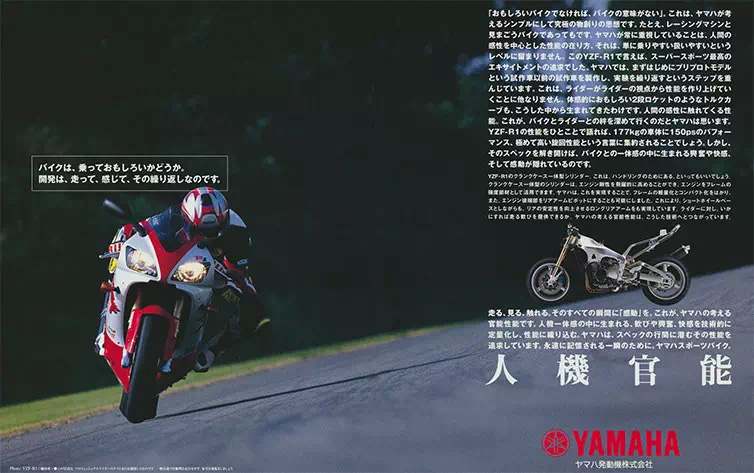
At present, achieving carbon neutrality has become a goal of companies worldwide and the methods employed hereafter to do so will change, from electrification to revolutionary advances with the internal combustion engine. The accepted form of a motorcycle itself may even change. However, as long as people and vehicles continue to exist and interact, Yamaha will continue to create products bearing the “R” synonymous with its brand. As riders are human, we will inevitably desire a vehicle that looks like this or can do that, and Yamaha believes it is our calling to take on the challenges that will answer these desires, and we will tap into our R-DNA from yet unexplored angles along the way.
Products
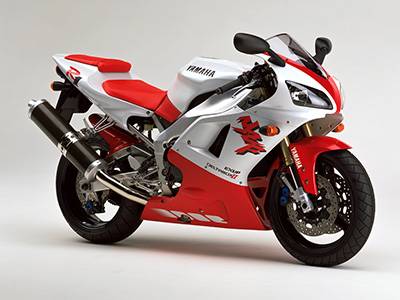
- YZF-R1

- YZF-R7
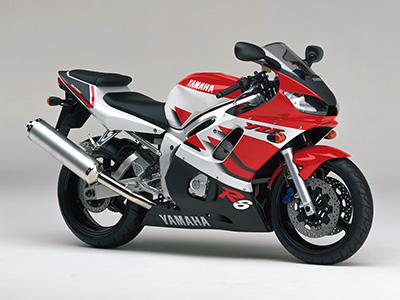
- YZF-R6
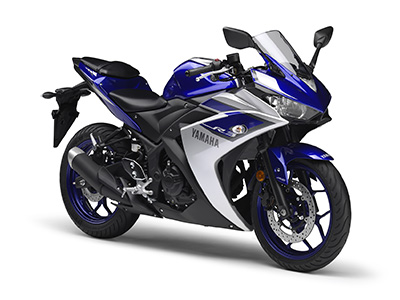
- YZF-R3
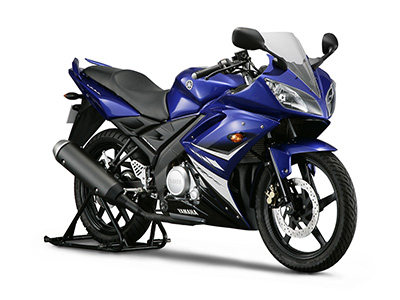
- YZF-R15

- YZF-R125